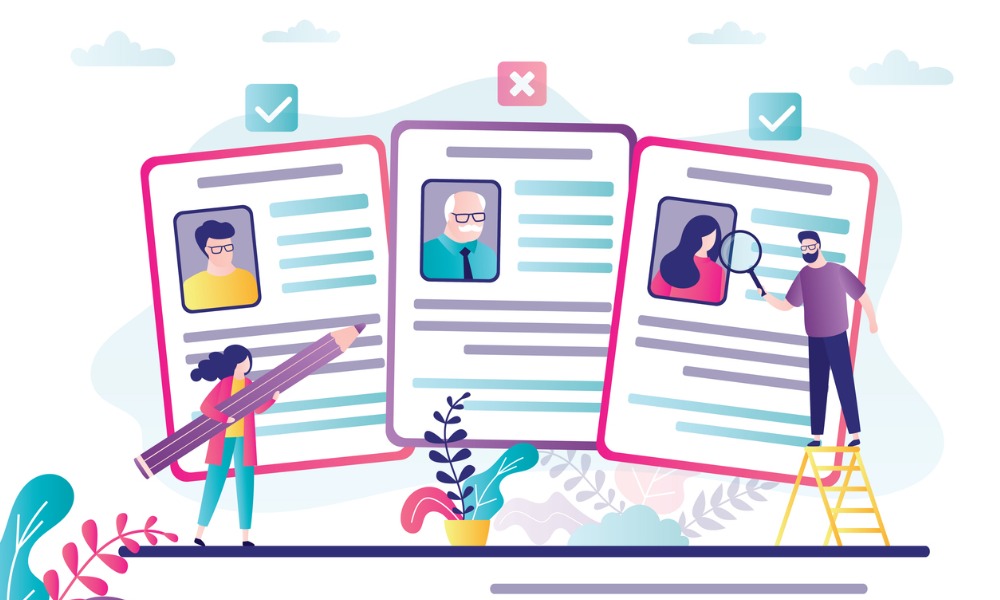LinkedIn's Feon Ang reveals HR's role in managing the future of work

This article was produced in partnership with LinkedIn.
The pandemic has changed the way we live and work, and these changes are here to stay for the long run, said Feon Ang, managing director, APAC at LinkedIn. “Business leaders are rethinking their entire working models, cultures, and company values,” Ang said. “At the same time, employees are looking for opportunities that best meet their needs – greater flexibility, better pay or deeper fulfilment.”
LinkedIn has dubbed it ‘the Great Reshuffle’ and launched a dedicated Future of Work study to better understand this phenomenon. What they found was that flexibility is now top of mind for employees across Asia Pacific and Japan, with workers in countries like Singapore (81%) and Australia (78%) asserting that flexible work arrangements are important to them. “Employees have reaped enormous benefits from remote or hybrid work, like increased work-life balance, improved personal relationships and better physical and mental health,” she said. “Now, even as economies and offices gradually start to reopen, employees don’t seem to want to give up the flexibility.”
The data tells all – flexibility has become somewhat ‘non-negotiable’ for employees. In fact, most employees in Asia Pacific and Japan seek a sweet spot of spending three to four days per week in the office, and one to two days working from home. About two in five staffers have already requested flexible work arrangements. Furthermore, leaders shared that more than half (56%) of job candidates ‘actively discuss’ the possibility of flexi-work before they even decide to join. The workforce of today will never be the same.
With HR tasked to find the sweet spot between meeting employee and business needs, what can leaders do to manage the changing workplace dynamics? “Leaders must reinvent the way they think about employee engagement, development opportunities and career progression and see it through a new lens – one that puts people first and not location,” advised Ang.
Read more: LinkedIn reveals employees' top priorities
Practical tips for HR to align with employees’ changing needs
- Develop culture of trust
Firstly, such a major strategic ‘reinvention’ should start with trust. “Long gone is the general belief that employees are only working if you see them at work,” said Ang. “Today, we’ve learnt that most work better if they are trusted to manage their own responsibilities and deadlines.”
Leaders at LinkedIn, for example, have learnt to embrace a culture of trust when it comes to hybrid working arrangements. “This means that we trust each other to do our best work where it works best for us and our teams,” she said. “We’ve learned every individual and every team works differently, so we’re moving away from a one-size-fits-all policy. We’re allowing everyone to decide what kind of home-office split works best for them.”
To effectively build trust at the workplace, HR leaders must set up two-way communication that empowers authenticity and transparency within the team. This has never been more important than now, so that everyone can take ownership of their work and communicate their needs in a timely manner.
- Enable a conducive home office set-up
Next, another tangible way to support employees is by helping them create a conducive work environment at home. Leaders can offer employees perks like a budget to purchase an ergonomic chair or computer monitor or help them adopt the necessary skills to work remotely.
- Constantly monitor and strengthen employee fulfilment
Additionally, if the past two years have taught us anything, it’s that change can happen quickly and suddenly. This means that employees’ needs may adapt and change according to the situation as well. Hence, a final tip for leaders is to monitor employees’ satisfaction levels through anonymous surveys and find out the best way to support staff, whether they’re based on site or at home. “At LinkedIn, we do this a few times a year using our Glint tool,” said Ang. “This helps us stay in tune to what our employees are thinking and feeling, even as we go through numerous workforce changes.”
Read more: LinkedIn reveals Singapore's most in-demand jobs in 2021
HR’s critical role to enable business success
All of HR’s efforts to align business and employee needs will pay dividends in the long run. This is especially as we experience the Great Reshuffle, where employees have reprioritised their professional and personal goals and are seeking out organisations who can meet their varied needs. HR leaders must thus lead the charge to ensure the business remains people-centric in its strategy.
LinkedIn’s Future of Talent report validates HR’s crucial role in the future of work: 62% of companies believe that HR has a significant role in shaping business strategies in the post-pandemic world. HR is also looked upon to streamline the business and hire more efficiently (89%). “HR can influence business strategies by being attuned to employee sentiment in the workplace,” said Ang. “This information can then be used to inform new initiatives that benefit talent.”
Through data, HR can decide on policy changes such as making flexible working arrangements permanent or enhancing learning and development opportunities. Such data will also enable HR to implement initiatives that can help employees manage burnout and re-prioritise their well-being and growth.
“It goes without saying that when employees work in an environment where they feel heard and valued, they are more likely to be happier at work,” said Ang. “This culture can positively impact talent attraction and retention.”
Feon Ang
Feon Ang is the managing director, Asia Pacific at LinkedIn. Feon has been with LinkedIn since 2013 and has vast experience in leading its talent and learning solutions business across the region. Feon has a track record of over 25 years in formulating business strategy and driving organisational transformation, and has a strong passion for nurturing talent.








